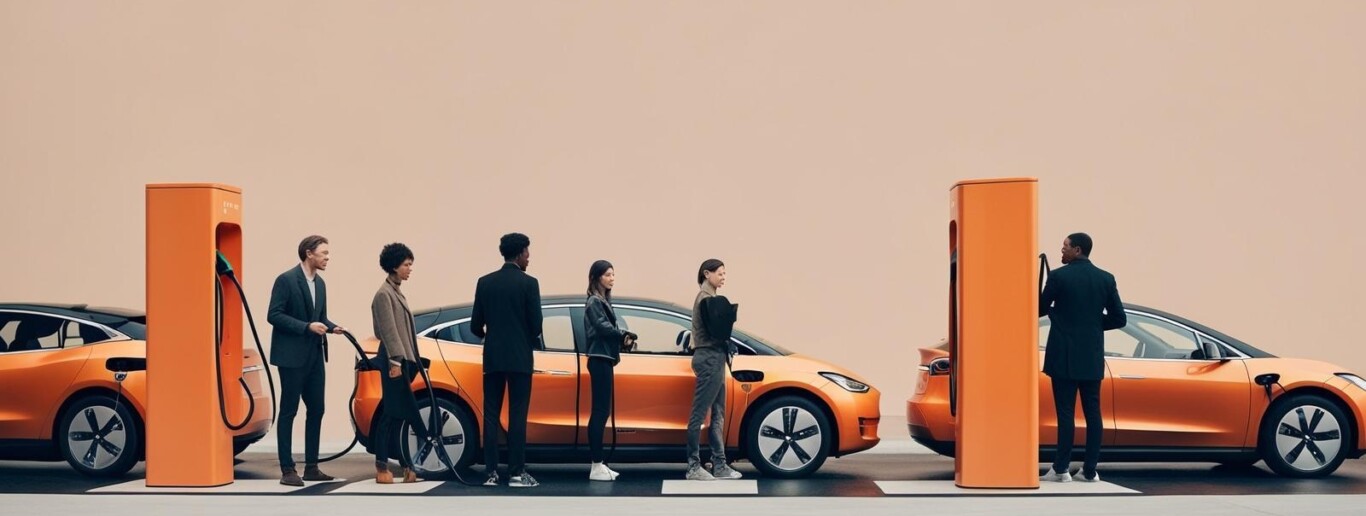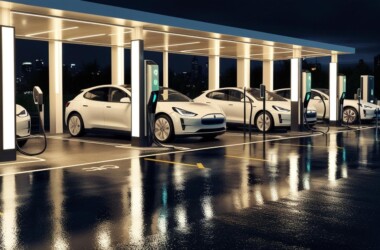As we step into 2025, it’s essential to reflect on the significant developments in the electric vehicle (EV) market over the past year and consider the evolving policy landscape under the new administration. At EOS Linx, we remain committed to advancing EV infrastructure and are excited to share our projections and goals for the year ahead.

Reflecting on 2024: A Year of Growth and Change in the EV Industry
2024 EV Market Highlights
The global EV market experienced remarkable growth in 2024, with sales increasing by 25% to reach 17.1 million units. This surge was primarily driven by China’s 40% growth, accounting for 11 million vehicles sold.
In the United States, EV sales continued to rise despite policy uncertainties. By the end of November 2024, 1,412,298 plug-in electric vehicles (PEVs) had been sold, making up 8.1% of total new vehicle sales- a clear indicator of the country’s growing adoption of electric mobility.
Policy Shifts Under the New Administration
With the inauguration of President Donald Trump in January 2025, the EV industry has seen a shift in federal policies. One of the administration’s first moves was signing an executive order revoking the 2021 mandate that aimed for 50% of new cars to be electric by 2030. Additionally, unspent federal funds for national EV charging infrastructure were frozen, creating uncertainty for public charging network expansion.
While these changes may slow federally driven initiatives, the demand for EV infrastructure remains strong. EOS Linx is proactively adapting to these shifts, ensuring that EV drivers and businesses continue to have access to reliable charging solutions.
EOS Linx’s Adaptive Solutions
"EOS Linx will provide expertise and guidance on policies in the past present and future. However, our programs and products aren’t built around them.”
-CEO Jeff Hutchins
- Private Sector & Municipal Partnerships: We are expanding collaborations with businesses, local governments, and private property owners to install charging stations independent of federal funding. By integrating chargers into commercial properties, retail locations, and municipal spaces, we can continue growing the network despite federal policy changes.
- Flexible Infrastructure Investments: By leveraging smart technology and data-driven site selection, we ensure our chargers are strategically deployed in high-traffic and underserved areas—maximizing both usage and profitability in a shifting regulatory landscape.
- Revenue-Generating Charging Solutions: Our chargers are more than just power sources—they incorporate advertising and digital media capabilities, creating multiple revenue streams. This model allows host sites to generate revenue while supporting EV adoption, making infrastructure investments more sustainable even with reduced federal incentives.
- State-Level & Utility Partnerships: While federal policies may shift, many states continue to push forward with EV initiatives. EOS Linx is actively working with state agencies and utility companies to secure incentives, grants, and funding to support continued infrastructure expansion.
While federal policy changes may influence the broader EV landscape, EOS Linx remains committed to driving EV adoption through innovation, strategic partnerships, and sustainable business models.
EOS Linx Projections and Goals for 2025
At EOS Linx, we are dedicated to expanding, enhancing, and innovating the EV charging infrastructure across the nation. In 2025, we are focusing on:
- Expanding Our Network: Increasing the number of EOS Linx charging stations to meet or exceed the industry’s projected growth of 30%, with an emphasis on underserved regions to promote wider EV adoption.
- Enhancing User Experience: Investing in technology-driven solutions for real-time charging station availability, customer support, and improved charging efficiency.
- Continuing Sustainability Initiatives: Updating and continuing to utilize more renewable energy sources into our charging stations to further reduce the carbon footprint associated with EV charging.
We believe the future of transportation is electric, and EOS Linx is committed to being at the forefront of this transition. As the market and policies evolve, we will continue to adapt, innovate, and lead the way in providing accessible and reliable EV charging solutions.
Sources:
- EV Market Growth & Sales Data:
- Reuters: "EV car sales to top 20 million in 2025"
- U.S. EV Sales (DriveElectric.gov): "November 2024 EV Sales Data"
- Policy Changes Under Trump Administration:
- Reuters: "Trump revokes Biden order that set 50% EV target for 2030"
- Business Insider: "Trump’s EV policy changes and impact on Tesla
More news from EOS

March EV Charging Update: Navigating Policy Shifts & Market Resilience
As we progress through 2025, the U.S. EV charging landscape is experiencing notable changes. From federal funding uncertainties to rapid private-sector innovation, this March update explores how recent policy moves and market dynamics are reshaping charging infrastructure and how solutions like those from EOS Linx are designed to help operators stay ahead.

Reflecting on 2024: A Year of Growth and Change in the EV Industry
As we step into 2025, it’s essential to reflect on the significant developments in the electric vehicle (EV) market over the past year and consider the evolving policy landscape under the new administration. At EOS Linx, we remain committed to advancing EV infrastructure and are excited to share our projections and goals for the year ahead.
